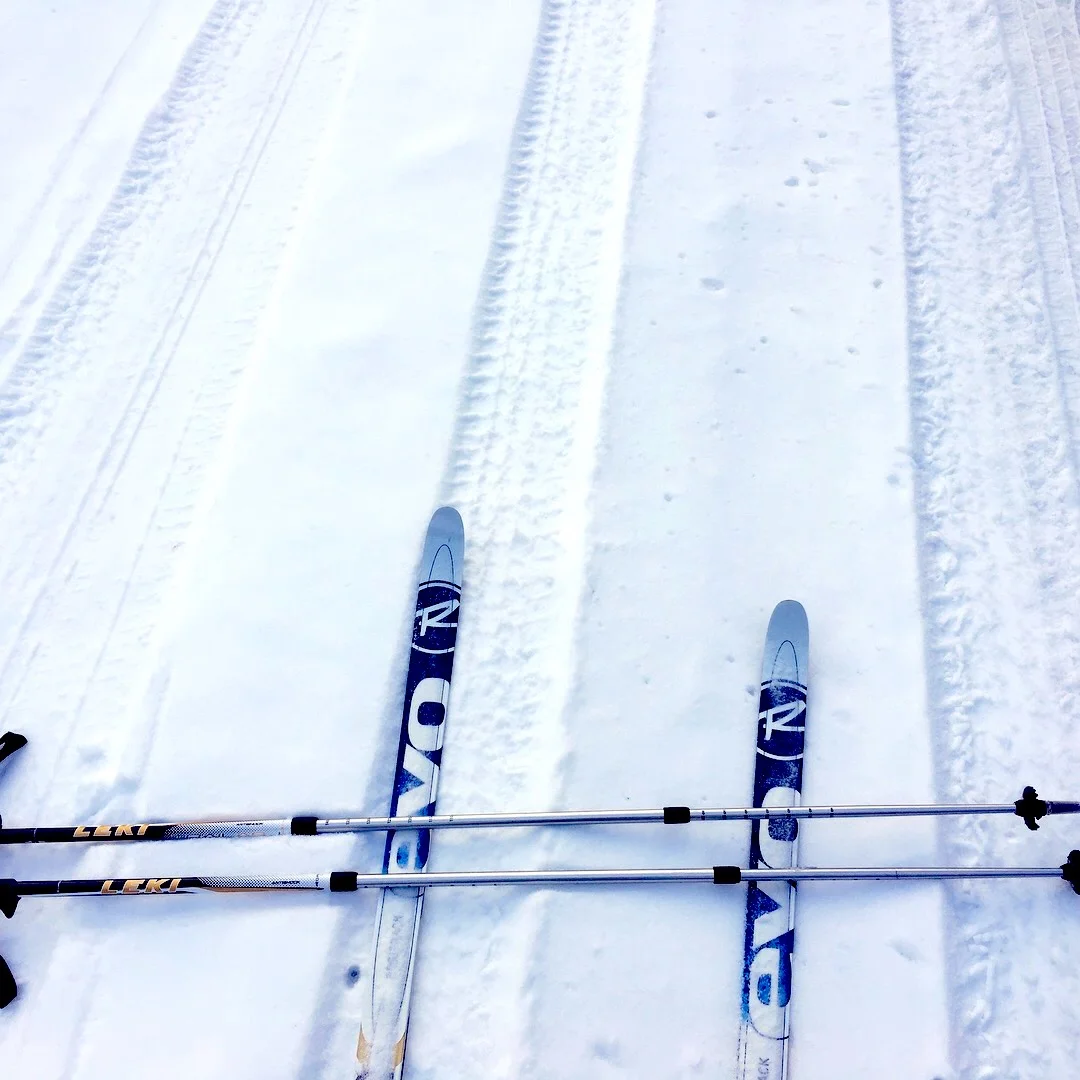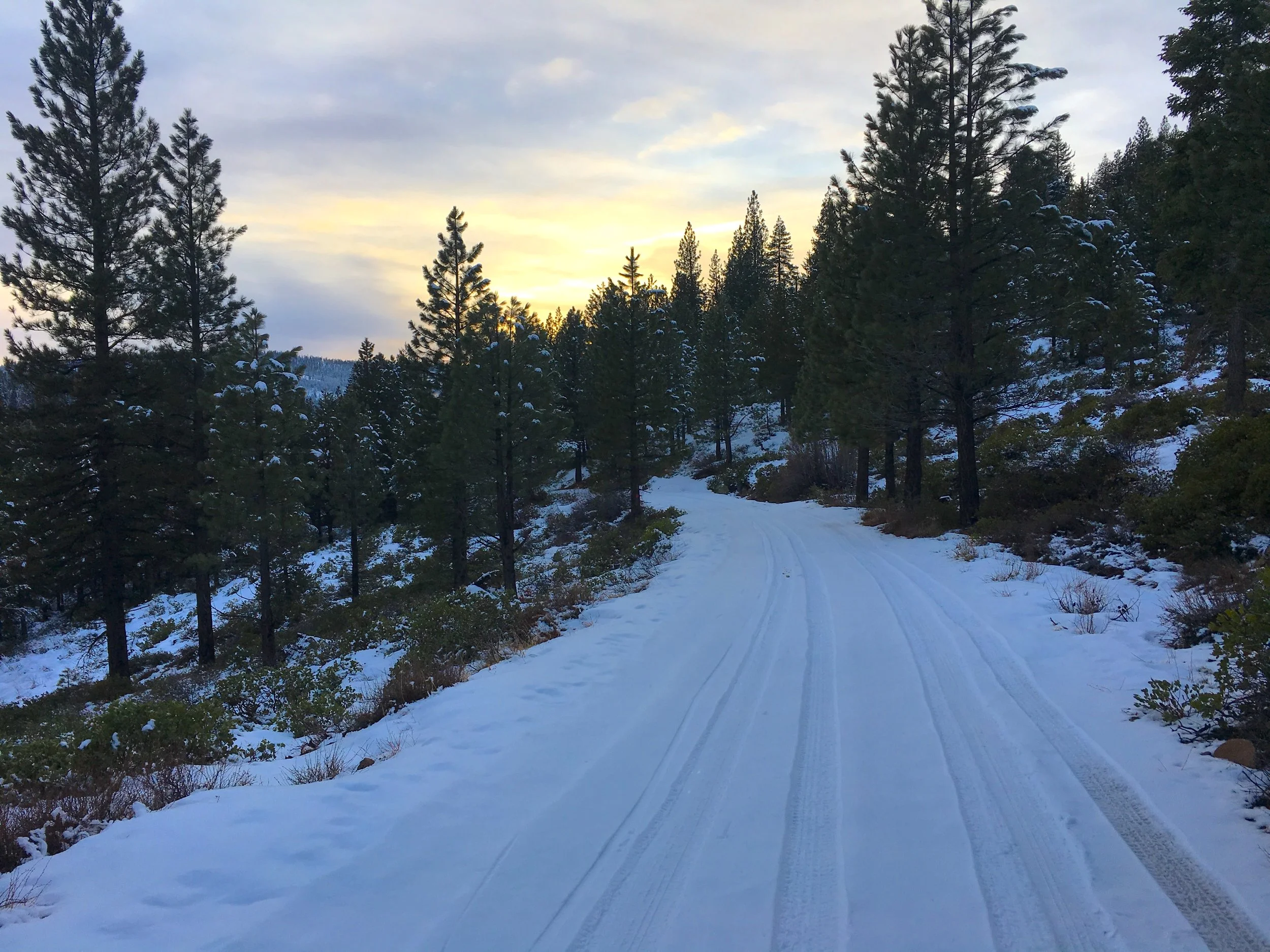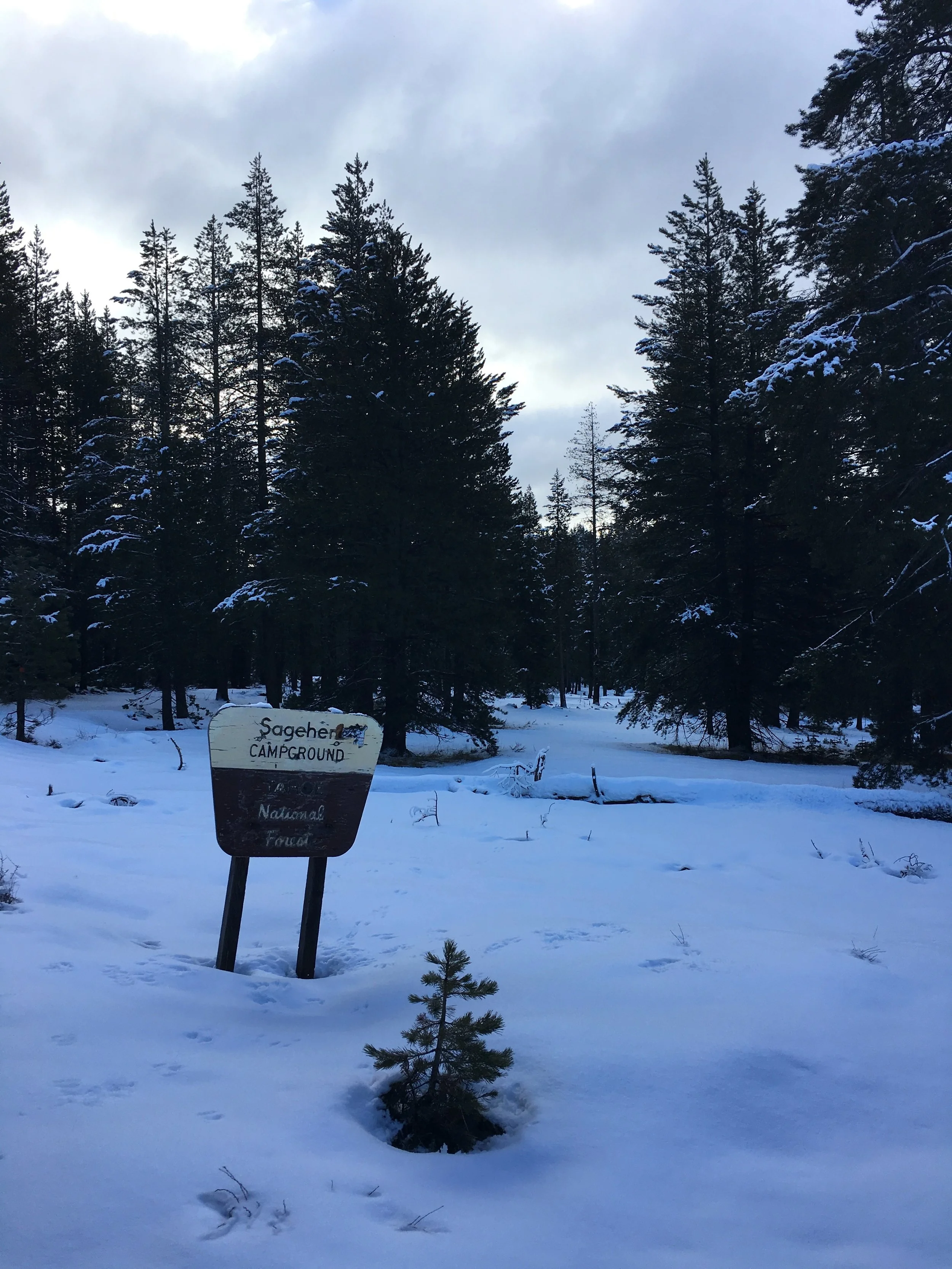Sage Hen Day 1 (12/27/2018)
I made it. First few hours, already on the skis. 12/26/2018
As usual there were a few bumps in the road but I eventually arrived late afternoon at Sage Hen Field Station just outside Truckee, CA. Right now, the sun is rising up over the mountains to the east. Clouds mix with the deep blue sky that reminds me so much of this place. A deep manganese blue like that reflected in Lake Tahoe.
Today I will explore. I’ll put on my skis and see where the trails take me. There are trails all around and I’m likely to run into folks but I’m essentially all alone here. Someone comes by to check on the buildings and the heat but I’ve not seen them yet, only heard them. A little snow is falling from a rogue grey cloud. We may get some weather, a flurry or a dusting, but the forecast is mostly clear for the next 7 days. Even with the clouds above, I’ve not seen this much blue sky in what feels like weeks. Back home in Washington, a grey rain coat has settled in on Puget Sound that likely won’t lift except for the regular yet all too brief bursts of sunshine, until March or April. It’s all right. Water is life.
Plans for today are slowly coming into focus. Explore during the day. Research online about the local ecology, fire history and this evening write all those letters I’ve been putting off. I am anxious, not for my work here at Sage Hen, but for other things that I packed along with me. The solitude granted by this artist residency is just what I need to tackle and complete those other things. When I leave I’ll have completed almost all that is needed. At home a mildly mad dash to assemble new images while also preparing for a new quarter….
But now I am getting way ahead of myself. It’s about time, this project, why I am here. Below is a kind of description for the project at hand, the one that will premier in Seattle this spring/summer!
The road home, for now, Sage Hen Road, Truckee CA.
forest-time
(forest-time) is new eco-feminist sci-fi that begins as a media presentation on fire ecology, past and future in the Pacific Northwest, and gradually devolves into a primal live-cinema performance about sticky entanglements across ecologies, economies and time-scales.
Based on research conducted in the western states of Washington, California, Nevada and British Columbia, Canada (forest-time) will feature human and Ai performances, video, field-recordings, soundscapes and song.
At the center of a layered performance, is an investigation into the idea of Time, how this concept or construct is rendered in a forest, a computer, in a human. How might nonlinear perspectives on time allow us to see beyond anthropocentric, existential hang ups to a less hierarchical and more equitable global society, economy and ecology? If we can see time in the trees more accurately than in a clock what is the point of all these alarms. Time is more material, less linear than we were led to believe. It’s in the sound, in the soil, the trees, the sea, the salmon, the whales, their bones, your bones. Whose time is it anyways? Or is it that time owns us or is there just no such thing? Only a multi-layered infinite now.
Trees can tell us with staggering accuracy what happened in the past by the number and quality of the rings found inside their heartwood and sapwood. It’s called dendrochronology. There’s also dendroclimatology, the study of tree rings to detect environmental patterns like drought and fire.
Now is place-based. It is “here and now” yet place is also the Past especially when we can see it in the earthy material around us. A sundial might come close to telling time but a material sense of time, like that expressed in a forest or a coastline can be more real than any digital or analog display. If you care to look, you can see the past, feel it, pick it up and hold it in your hands.
Fieldwork for this project is nomadic and takes place across time and space, tracing a road taken by many Now moving (myself included) north along the coastline to find work, affordable housing, water, clean air and a livable Future.
Here in the Pacific Northwest, we don't always see the sun, so a sundial is less reliable. Trees can tell time.
Morning ski
Outside by 9 to begin to get the lay of the land. Clouds, snow dusting, sun. I found a fantastic site to study. There are a number of very large wood piles. The 4th one on my ski today was a sight to behold. Trees stacked horizontally in some loose order under a light blanket of snow probably 3 stories high. I need to return to really get a sense of scale. Why were they all cut? Beetles is my summation. Thinning the forest of sick and dying trees to protect the living. But this last stack still had some green in the branches.
After skiing for an hour and a half my shoulders and ankle began to stiffen. I’ll return tomorrow. The next field trip today is around camp again. I’m going to see which doors are open. The kitchen looks promising. Might need a bucket for compost. Starker Leopold’s cabin is at the edge of camp. I’m going to head out there as soon as I finish my coffee.
I almost feel like I’m a refugee here. I almost didn’t make it. Now I am here and ideas are swarming. I want to know more about the invertebrates that over-winter here, my current companions. Coyote for sure, rabbits, some birds I heard singing today, and some tiny tracks, a snow mouse? Thinking I can find the lifecycle of these critters and compare. I also want to learn more about this place, this human built place. I can feel something here, a deep belief that the land, the animals and trees are vital to our own survival. This place, Sage Hen, was established by Stryker Leopold, Aldo Leopold’s son.
I just finished the Big Burn by Timothy Egan, which is about the birth of the Forestry Service and Conservation, and the impact of western expansion, speculation and capitalism on the great fire of 1910… A really great relevant book especially now as we grapple with increasingly destructive wildfires. On the last pages Egan quotes the Wilderness Act, which established, “a National Wilderness Preservation System for the permanent good of the whole people, and for other purposes… where man himself is a visitor who does not remain.”
Yes, that’s the moon up there. It’s waining but still pretty bright at night. Hope to catch a glimpse this evening.
Being alone here at Sage Hen right now I feel that way. Like a visitor. Yet while I appreciate the values that gave birth to the Conservation Movement, brought to political life by Teddy Roosevelt and Gifford Pinchot, I believe in our present ecological era it might be more prudent to think of ourselves not as visitors but as actors within a diverse and complex ecosystem, filled with innumerable players all with agency, all with rights and purpose. What role do humans wish to play? All these ideas are swirling around after less than 24 hours here. Zowey. Time to go outside and explore some more!



